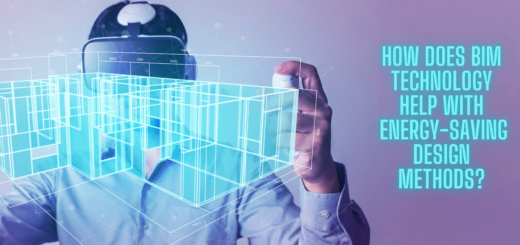What is Smart Bridge Construction? and The Power of BIM and 3D Printing!
In recent times, there is a lot of excitement in civil engineering around the potential the Internet of Things (IoT) and a range of digital innovations hold in enhancing the functionality, safety, and performance of buildings and structures. Nothing exemplifies the coming together of the system of brick-and-mortar and information technology better than bridges. As the bridges incorporate advanced technologies, BIM, 3D printing, and intelligent systems, they become smart bridges.
What is Smart Bridge Construction?
Smart Bridge construction involves incorporating advanced technologies into bridge design and building processes. These technologies can include self-monitoring sensors, energy-efficient materials, and even 3D printing techniques for faster and more sustainable construction.
For example, a Smart Bridge might use sensors to detect structural wear and tear, notifying maintenance teams for timely repairs, ensuring long-term safety and durability.
Features and Components Of Smart Bridges:
1. Sensors / IoT:
Smart bridges are equipped with various sensors that collect data on structural health, traffic conditions, environmental factors, and other parameters. These sensors provide real-time information for monitoring and decision-making.
2. Continuous Monitoring:
Smart bridges enable continuous remote monitoring, allowing engineers to access data and receive alerts regarding any abnormalities or potential risks. This capability improves response time and enhances safety.
3. Data Analysis:
The data collected by the sensors is analysed using advanced analytics techniques. It enables engineers and authorities to gain insights into the bridge’s performance, detect potential issues, and make informed maintenance and repair decisions.
The purpose of embedding these features in bridges is to: improve the safety of bridges, extend their lifespan, optimize their maintenance efforts, and enhance their overall efficiency.
Some of the well-known smart bridges in the world are: the Millau Viaduct, France, the world’s longest cable-stayed bridge; the Oresund Bridge, a combined road and rail bridge connecting Denmark and Sweden; the Sheikh Zayed Bridge, Abu Dhabi; the Gateshead Millennium Bridge, United Kingdom, a pedestrian and cyclist bridge, and the Banpo Bridge, South Korea, Seoul.
These bridges utilize smart technologies, including sensors that measure wind speed, temperature, and bridge vibrations to ensure structural integrity and safety. They feature smart traffic management systems that monitor and control traffic flow in real-time, and intelligent lighting systems that adjust the intensity and color of the bridge’s lighting based on ambient conditions.
4. Enabling Technologies
Conceiving, designing, and implementing such smart bridges inevitably require smart software tools and digital technologies. Among them worth mentioning are Building Information Modeling (BIM), and 3D printing technology. Here is why:
BIM plays a significant role in the construction of smart bridges. By being a digital representation of the physical and functional characteristics of a bridge project, BIM models can integrate various aspects such as design, construction, operation, and maintenance of bridges. The benefits of using BIM for bridge projects include:
5. Design Visualisation:
BIM allows for the creation of 3D visualisations and virtual walkthroughs of the bridge design. This helps stakeholders better understand the design intent and identify potential issues or improvements related to smart elements, such as sensor placement or integration of monitoring systems.
6. Enhanced Data Integration:
BIM acts as a central repository for all project-related information. Thus, it can integrate data from various sources, including sensors, IoT devices, and monitoring systems. This enables seamless data exchange, ensuring that the smart features of bridges are integrated into the overall project lifecycle.
7. Data-driven Decision Making:
BIM combined with smart features generates a wealth of data that can be analyzed and utilized for data-driven decision-making. It allows for real-time monitoring, performance analysis, and predictive maintenance, leading to optimized bridge operations and improved safety.
8. 3D Printing
3D Printing, aka additive manufacturing or additive building, has the potential to revolutionize the construction of smart bridges as this technology can introduce innovative approaches and benefits. Some of the ways 3D printing can be integrated into the construction of smart bridges are:
9. Rapid Prototyping:
3D printing allows for the quick and cost-effective creation of scaled-down prototypes of bridge components. This enables engineers to test and refine designs before moving to actual construction, reducing errors and optimizing performance.
8. Customized Components:
With 3D printing, complex, and customized bridge components can be fabricated with precision. This flexibility in manufacturing enables the creation of unique and optimized structural elements tailored to specific bridge designs and requirements.
9. On-Site Construction:
Portable and mobile 3D printers can be utilized for on-site bridge construction. This eliminates the need for transportation and assembly of prefabricated components, reducing logistics and construction time. On-site printing also offers greater flexibility in adapting the bridge design to site-specific conditions.
10. Material Innovation:
3D printing opens up possibilities for the use of advanced construction materials, such as fiber-reinforced polymers or concrete composites, that can enhance the durability, strength, and performance of smart bridges.
Thus BIM and the advancements in 3D printing are expected to redefine the way future bridges are conceived, constructed, and maintained.
BIM and 3D Printing Training
In this context, gaining knowledge and skills related to BIM (Building Information Modeling) and 3D Printing is increasingly becoming a prerequisite for civil engineers to thrive in their field and meet the evolving demands of the industry.
Training in these two technologies can greatly help civil engineers stay competitive in the industry. Explore our BIM training courses, and 3D Printing courses and take a step towards expanding your expertise in these emerging technologies.




